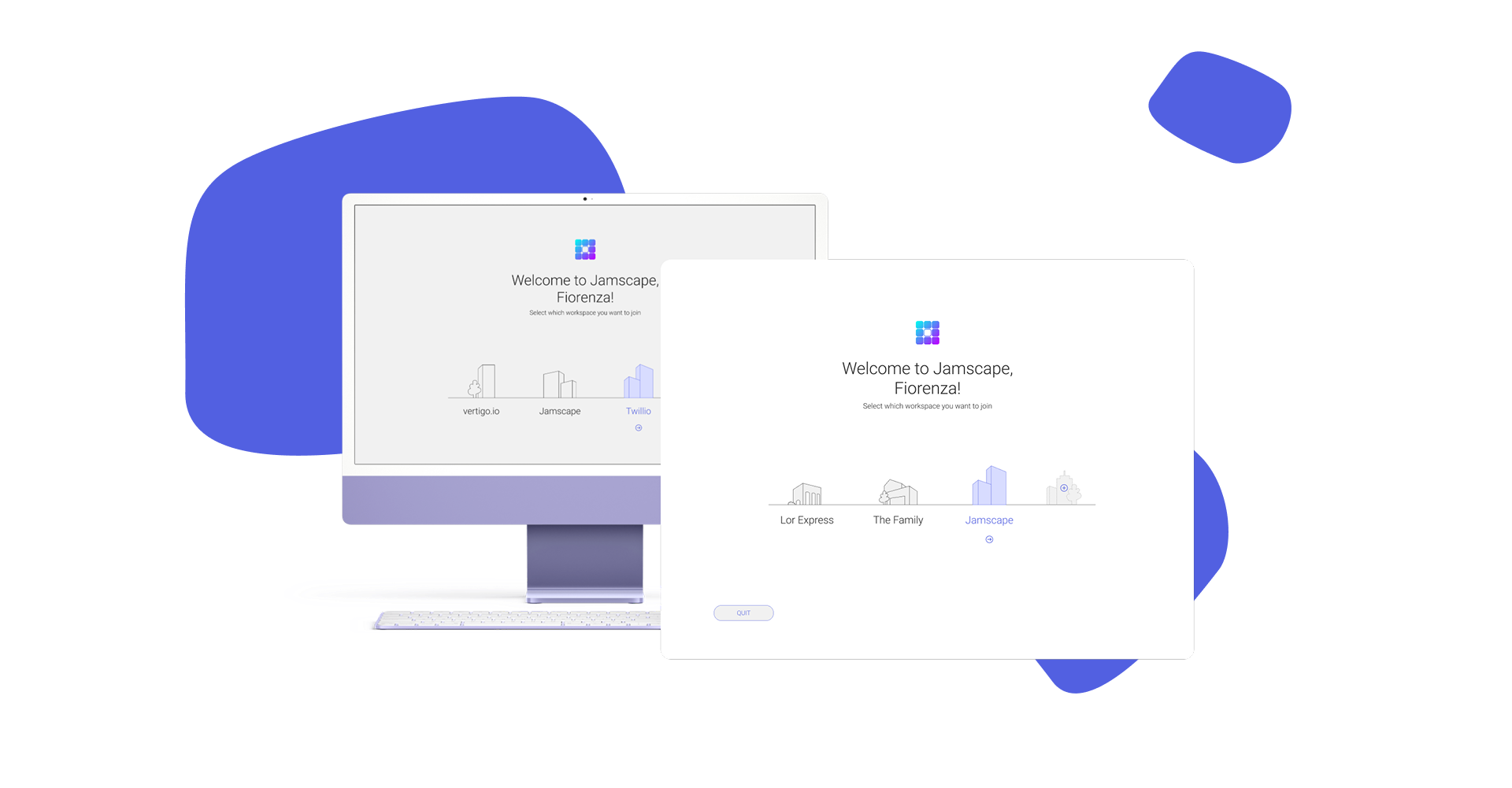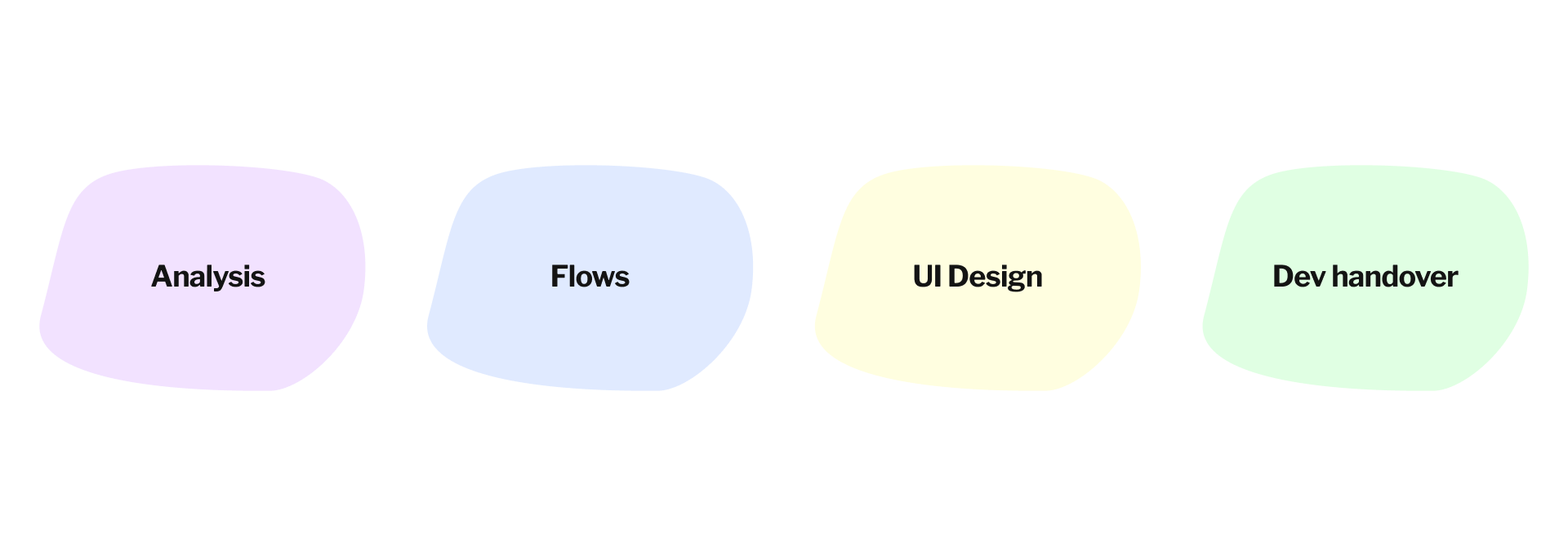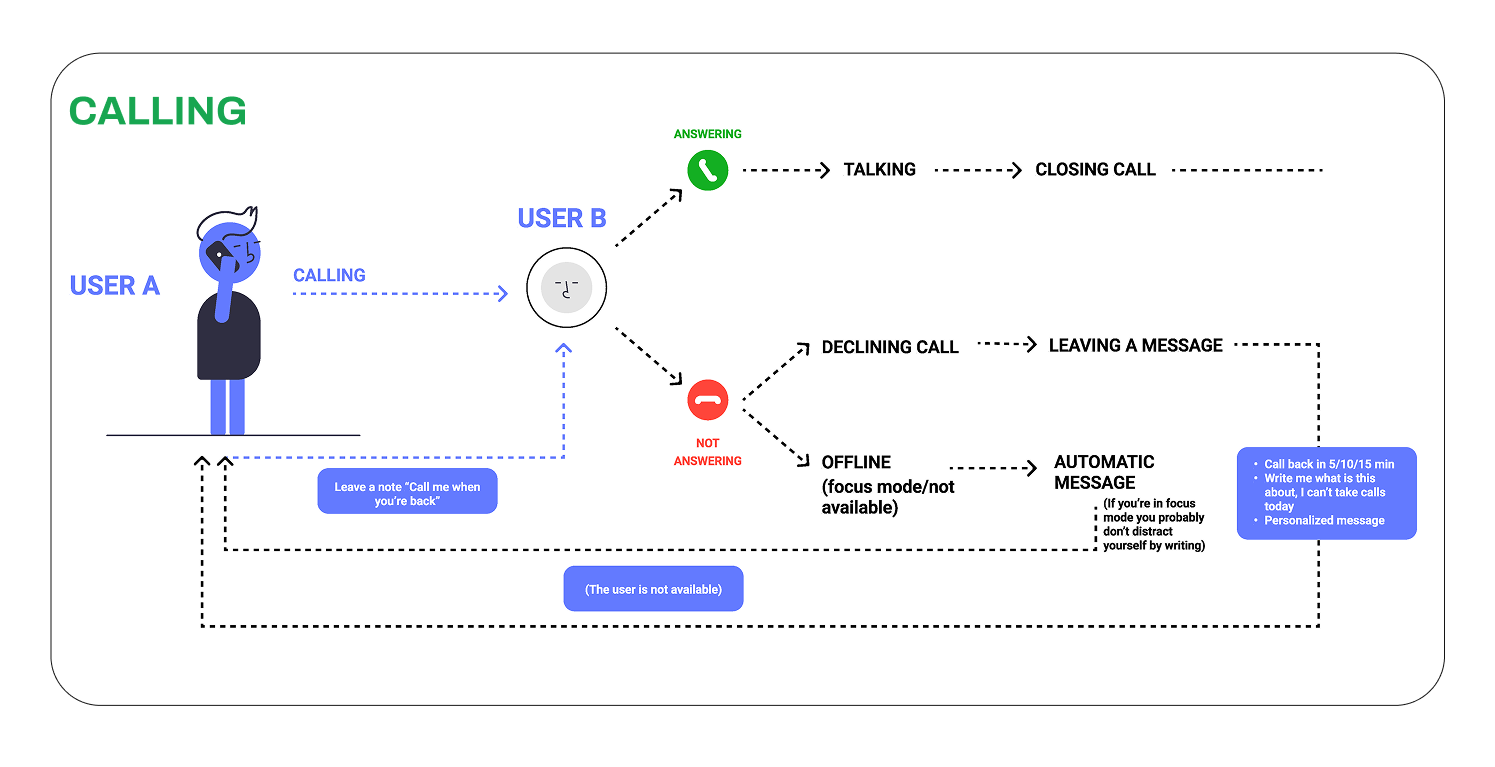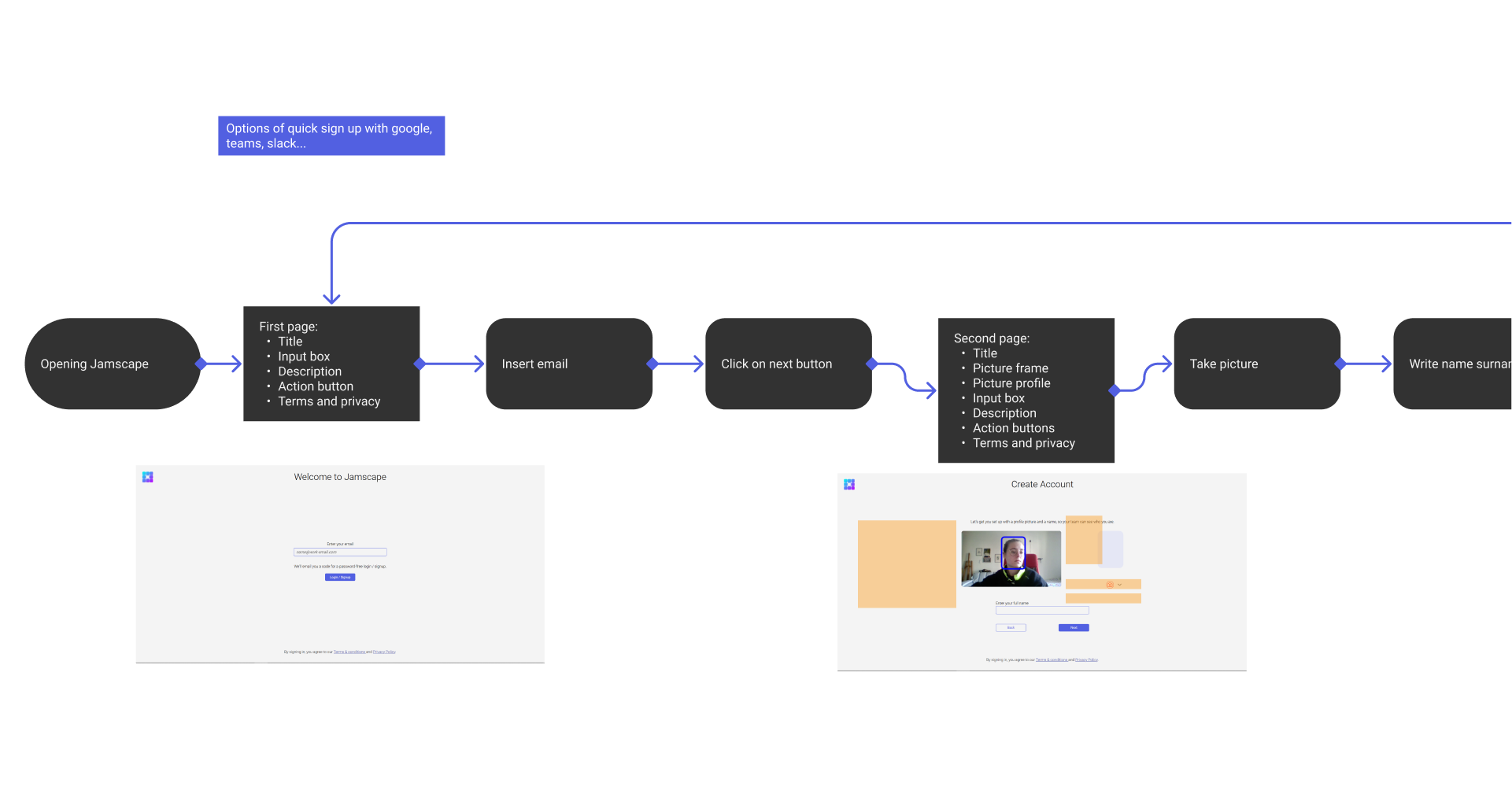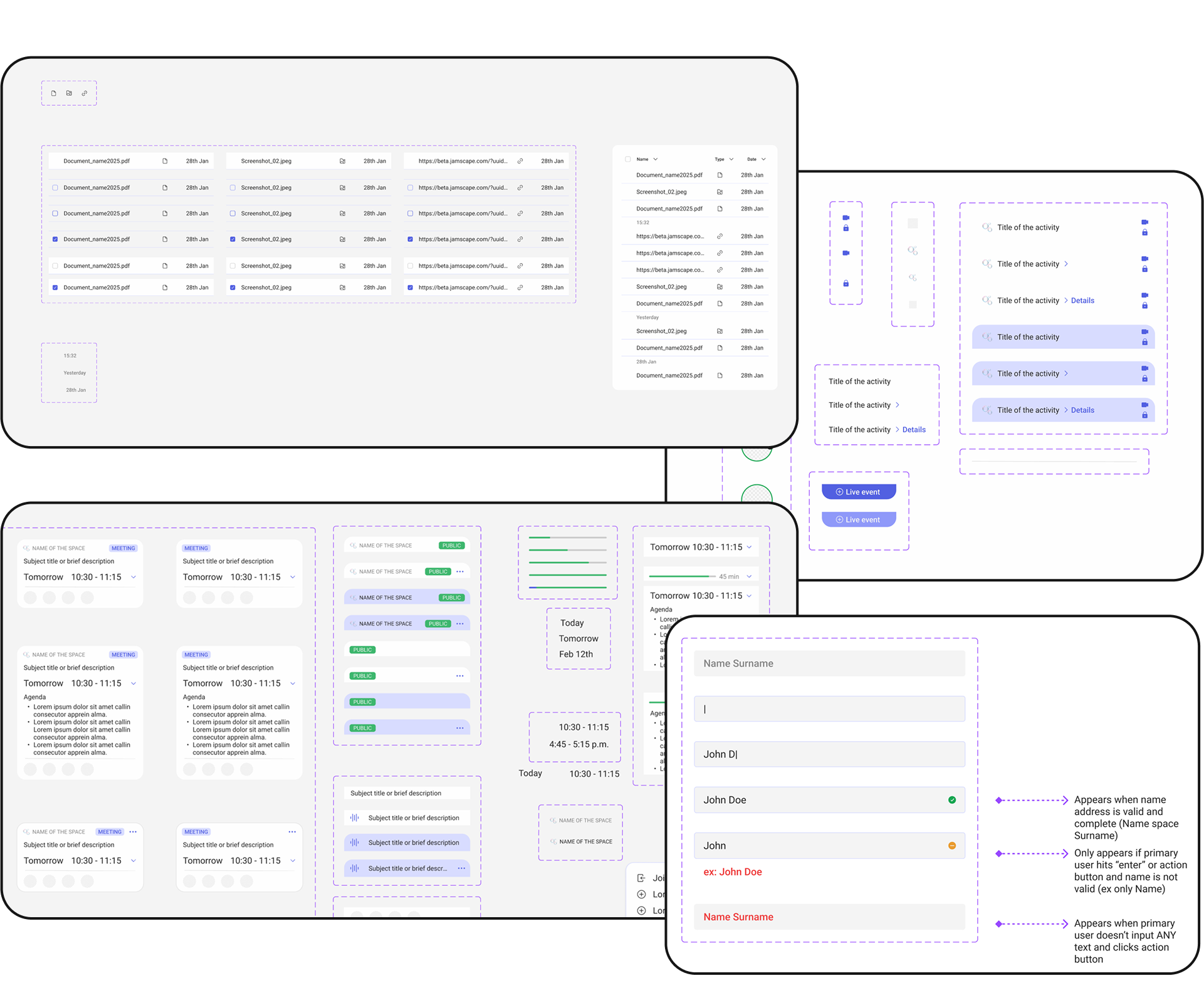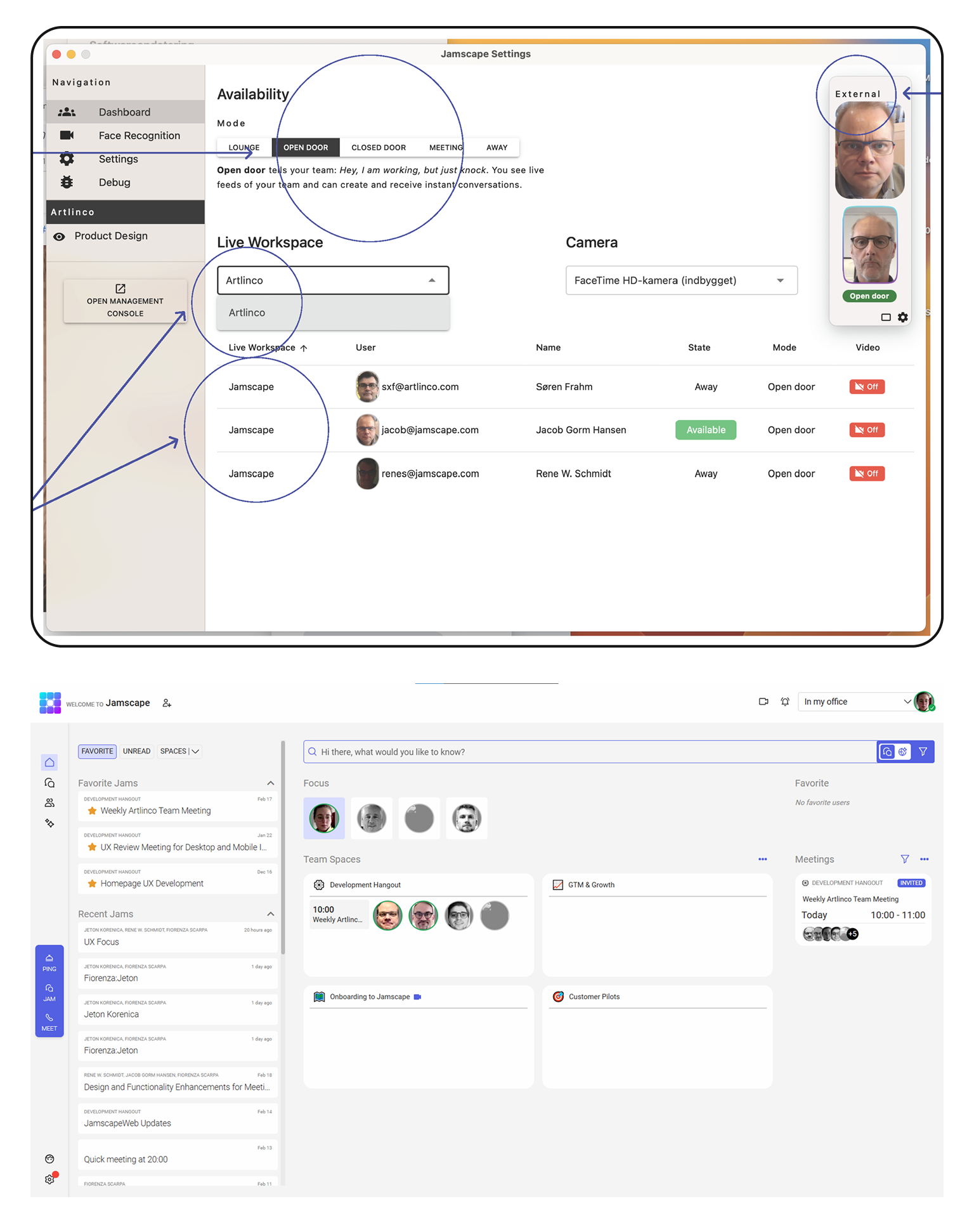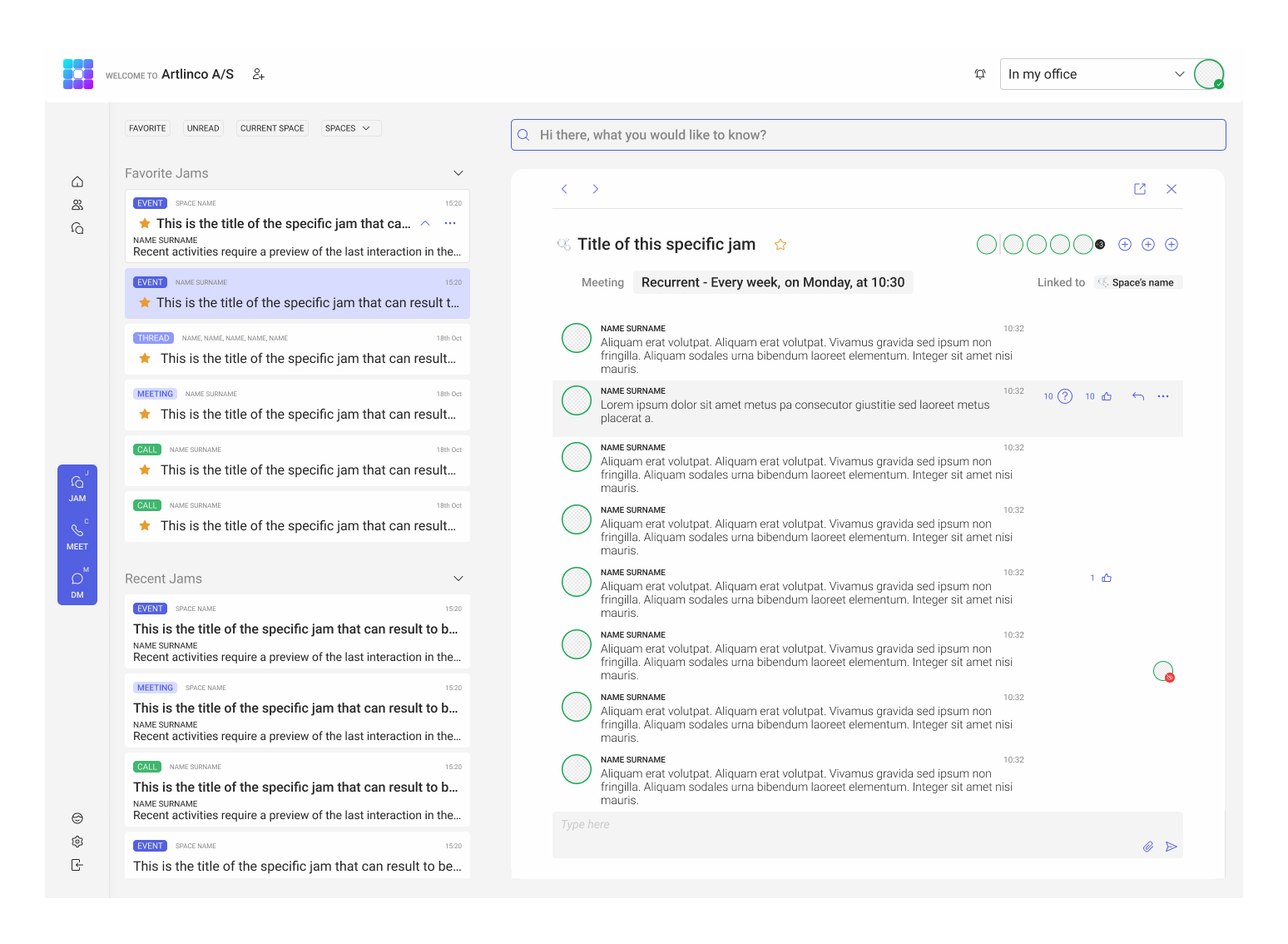Jamscape is a Danish startup building a virtual HQ platform to improve remote collaboration through AI-powered features (eye contact, presence, automated summaries).
My contribution evolved in two phases:
- Via Artlinco: supported early concept explorations, flows, and UX analyses.
- Direct freelance: designed core interfaces in Figma, built a design system, and collaborated daily with developers to ship features quickly.
Through the project I helped translate conceptual ideas into a coherent, scalable product experience, ready for iteration and development.
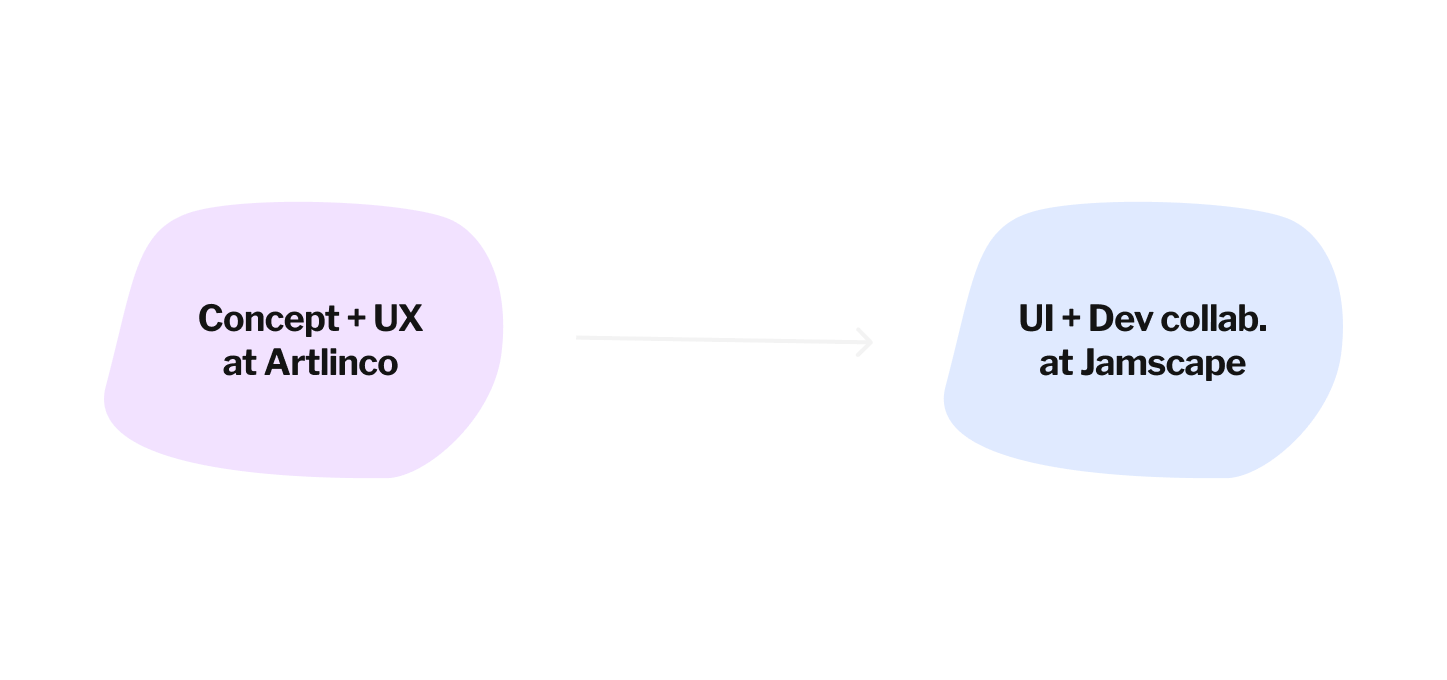
My role evolved from conceptual analysis to direct product delivery
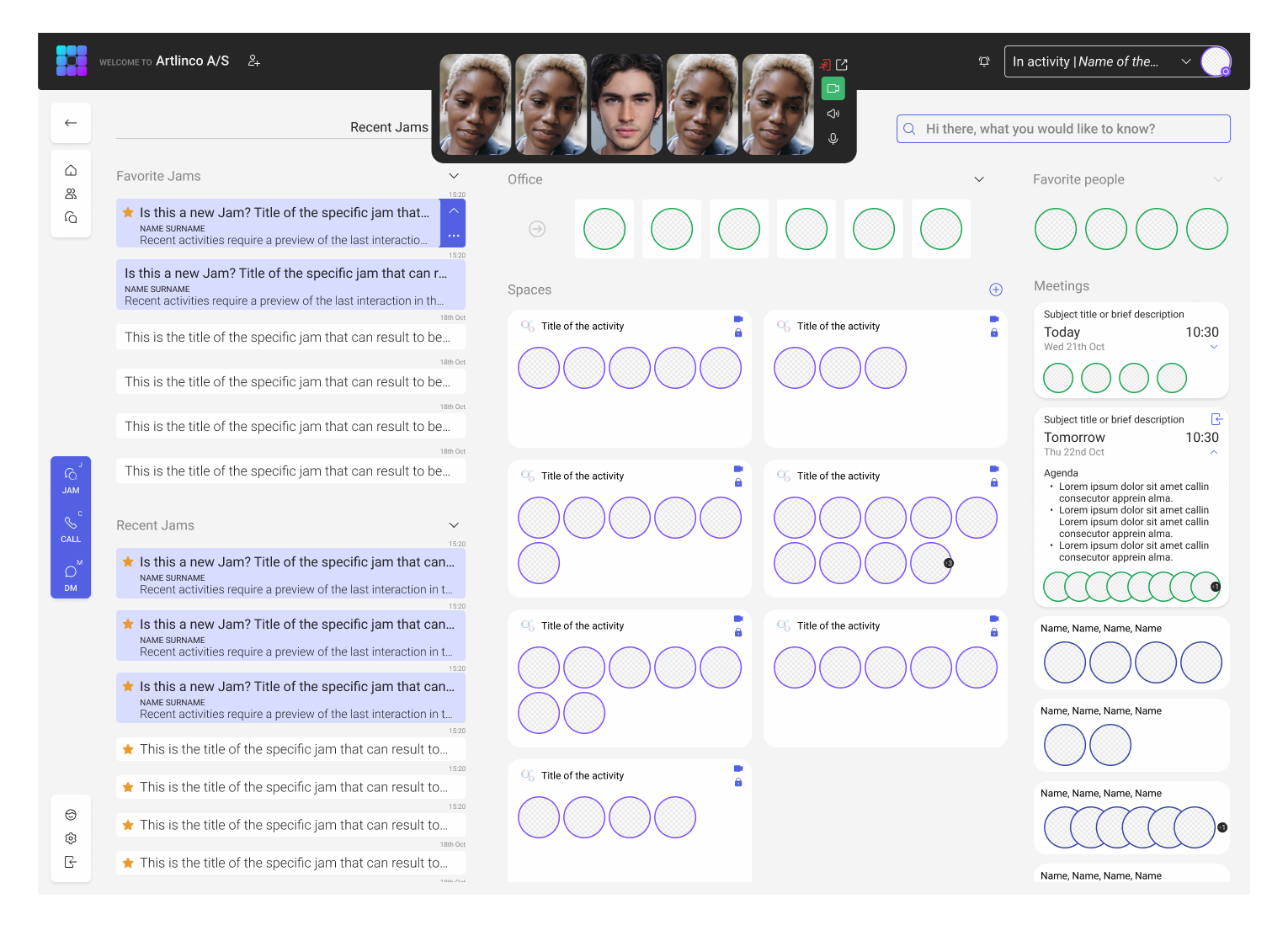
High-fidelity interface from the design system, integrated directly with development

